Here’s my top ten Victorian house interiors to visit!
One of my favourite pastimes is to visit museums and stately homes and I’m an avid National Trust member.
Many of the places I’ve visited have been truly inspiring and have given me a real insight into the Victorian and Edwardian home. This ranges from a gentlemen’s villa to a pauper’s back-to-back cottage.
Whilst I love visiting large country houses, I’m most fascinated by the homes of the everyday Victorian. After all, most of our ancestors were just average working or middle-class folk.
My top ten Victorian house interiors to visit aren’t the most extravagant or cutting edge.
Most importantly, I’ve chosen them based on their authenticity and the story they tell us about the past. These are actual houses so I’ve not included recreations in ‘living museums’ or stately homes and palaces. I have included Edwardian houses as they are a continuation of houses built in the Victorian period (in my opinion!).
Let me know your top ten Victorian house interiors to visit!
10. Ruddington Framework Knitters, Nottingham
Don’t miss: The gorgeous cottage garden with blue brick paths
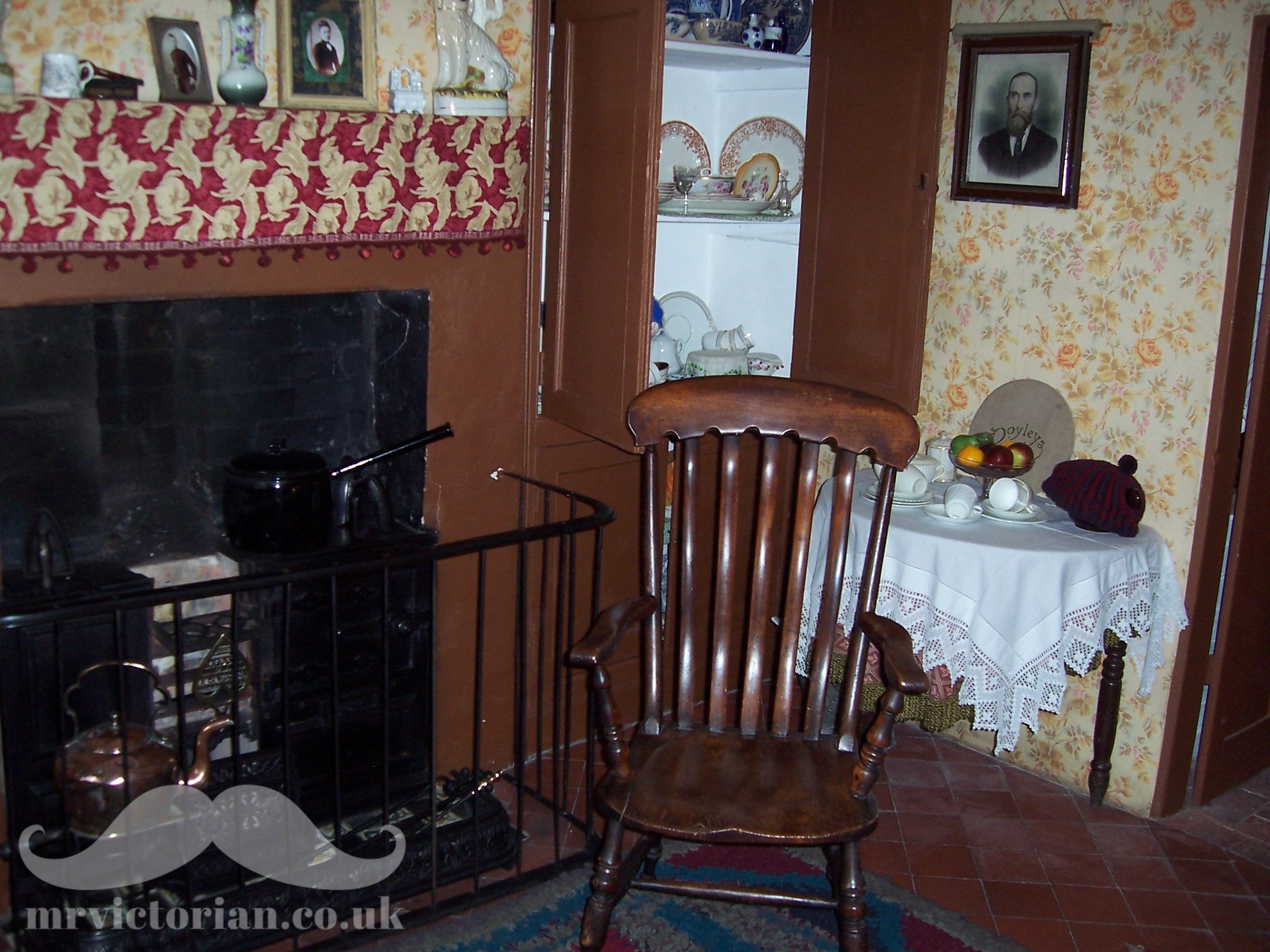
This small and relatively unknown museum includes a delightful framework knitter’s cottage with a restored living room with a range, scullery and bedroom.
Authentic period furniture and décor complement the cottage’s original features
You can also visit the working knitting works on the same site so you get a feel for the everyday working lives of the framework knitters.
9. 33 Palmeira Mansions, Hove
Don’t miss – Stunning and unusual original fireplaces
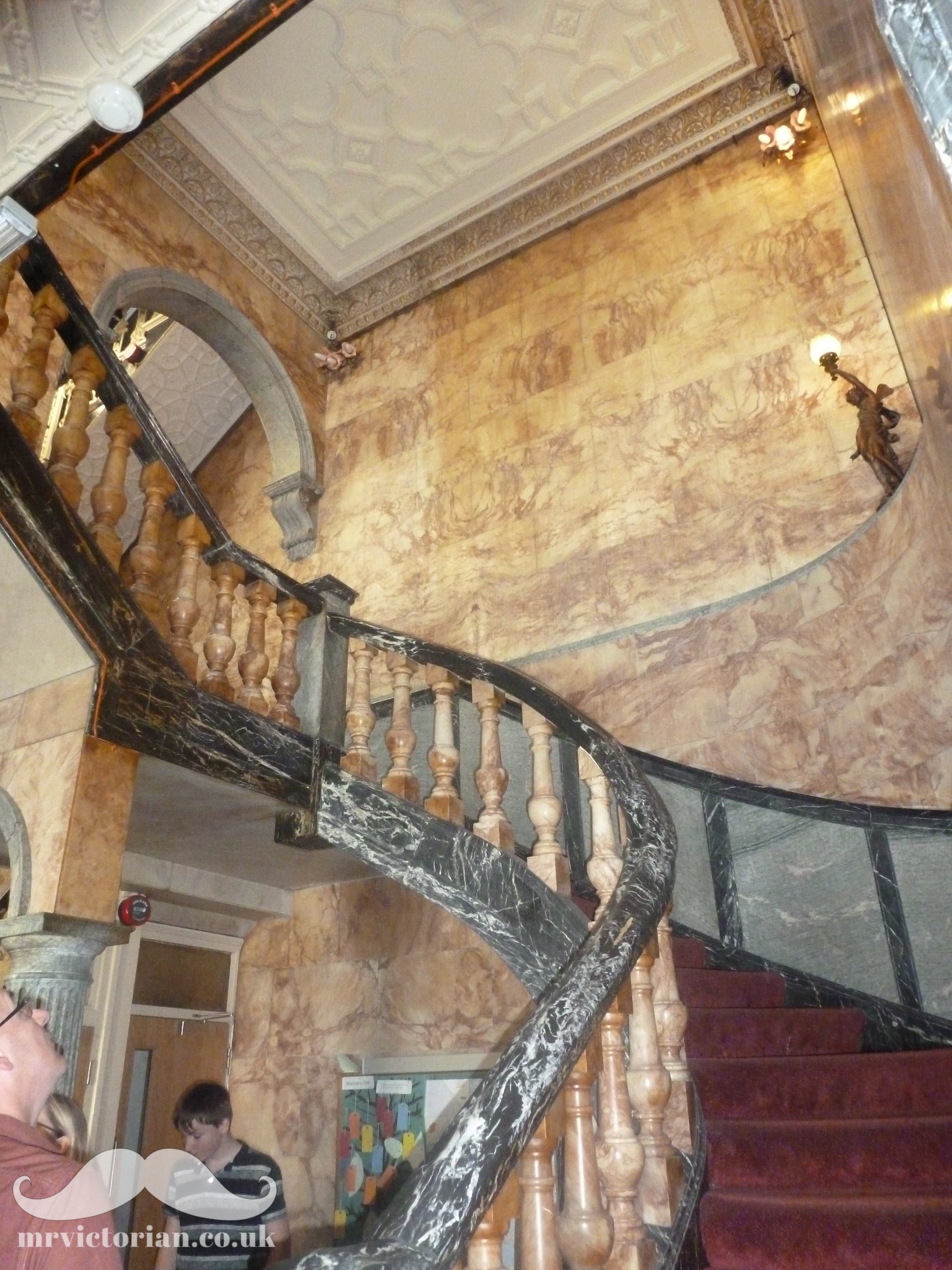
I’ve recently taken a tour of this grand 1880s house. The only reason it’s not higher up in the top ten Victorian house interiors is due to the loss of much of its original décor and furniture.
The house’s 1890s ‘nouveau riche’ owner lavished the house with high quality fixtures and fittings.
Most noteworthy features are a marble entrance hall and wonderfully over-the-top fireplaces.
It’s amazing many of these features survive as they could be considered hideous to modern eyes. But that’s what makes this place special!
Unfortunately, a language school now uses this building as an office but there are monthly tours on the first Sunday of the month. The tour guide is particularly enthusiastic and knowledgeable about the house.
8. Moorside House, Bradford Industrial Museum, Museum
Don’t miss – The grand hallway with fake marbled walls

Moorside House is a former mill manager’s house restored to its 1900s glory and set within the grounds of a cotton mill also open as a museum.
Highlights include stunning antique furniture, authentic light fittings, and recreated bathroom and kitchen.
This really is a hidden gem as you could easily miss it during a tour of the museum.
I believe most of the fittings are not original to the house. Unfortunately, I suspect some of the décor and furniture choices may have been out of a mill manager’s price range (e.g. William Morris wallpaper!).
7. Birmingham Back to Backs
Don’t miss – The fascinating exhibition on the large quantities of historic wallpapers found in the cottages
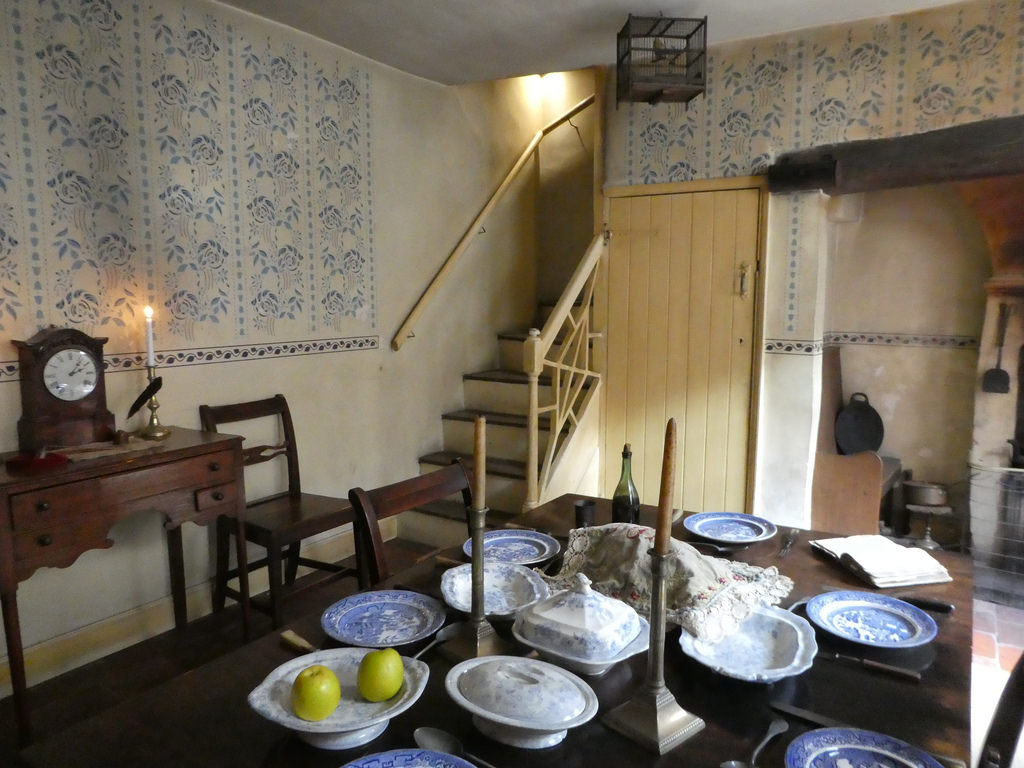
Cities across the UK were once rammed with back-to-back cottages for the very poor but this row is a very rare restored survival.
The National Trust and The Birmingham Conservation Trust have beautifully restoring this once derelict site and have recreated interiors covering four periods from 1840 to 1970.
Most importantly, the choice of colours, wallpapers and other décor are based on meticulous research of previous owners and original fabric in the buildings.
6. DH Lawrence Birthplace, Eastwood, Nottinghamshire
Don’t miss – Recreation of the original 1880s wallpaper in DH Lawrence’s bedroom
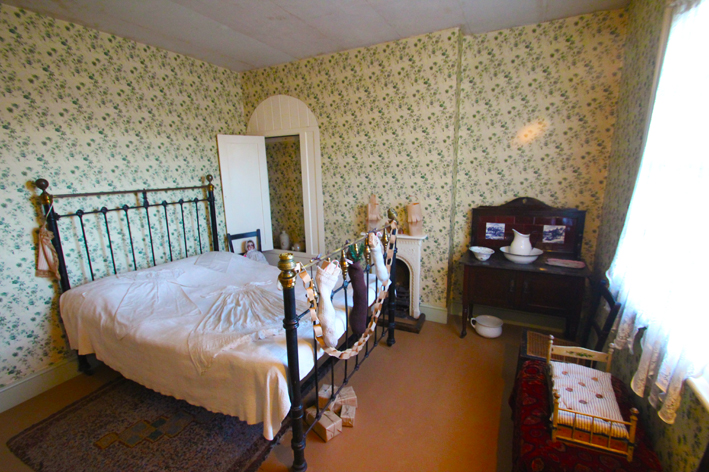
A local attraction to me, this museum brings to life the typical Victorian interior of your average two-up two-down miner’s cottage which still stand in their thousands in the Midlands and the north of England.
The writer DH Lawrence was born here in 1885 so the house has been restored back to this period, including working gas lighting and humble cottage furnishings.
The museum sourced many of the fittings in the 1970s from neighbouring houses so it feels authentic.
Specialists have restored DH Lawrence’s bedroom with painstaking accuracy in recent years. So I hope the same attention to detail is followed through in other rooms in future.
5. Beatrix Potter’s Hill Top, Ambleside, Cumbria
Don’t miss – The recreated 1905 wallpaper in the kitchen installed by Beatrix Potter
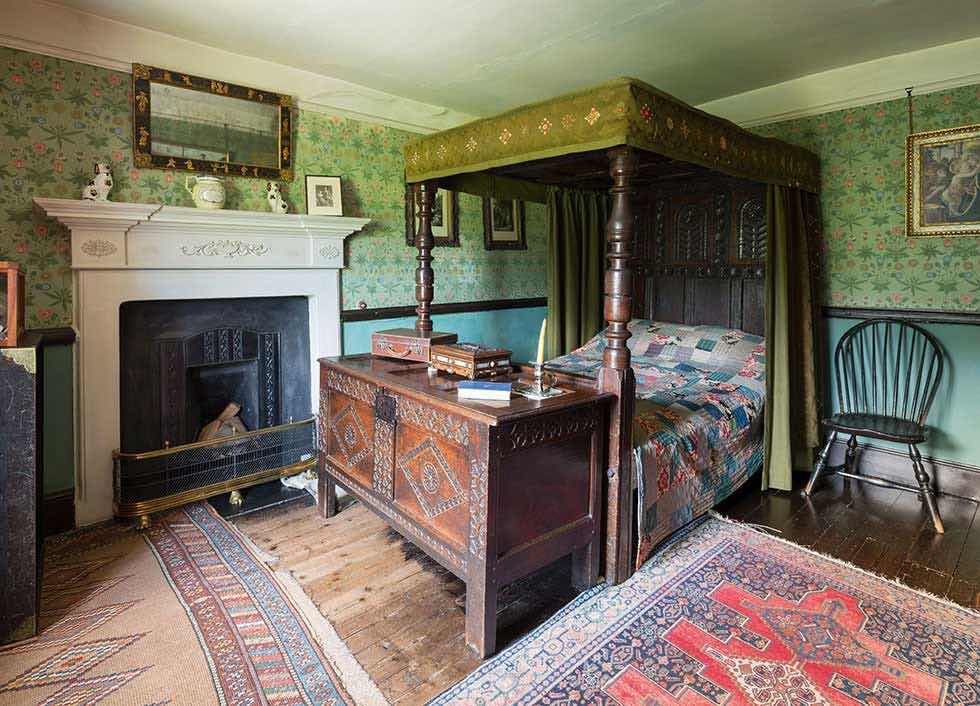
This idyllic cottage set in the beautiful Lake District is a place that lingers in your heart after your first visit.
The National Trust has restored the interiors to their 1900s appearance when the children’s writer Beatrix Potter lived there.
Many of her illustrations were based on the house’s interior and have helped the National Trust to restore the interiors with confident accuracy.
It can get very busy with huge numbers of tourists. Therefore, it’s best to visit during quieter periods in the spring and autumn to avoid the crowds.
4. Sunnycroft, (National Trust), Telford, Shropshire
Don’t miss – The wonderfully preserved master bedroom and rare tomato house and vinery
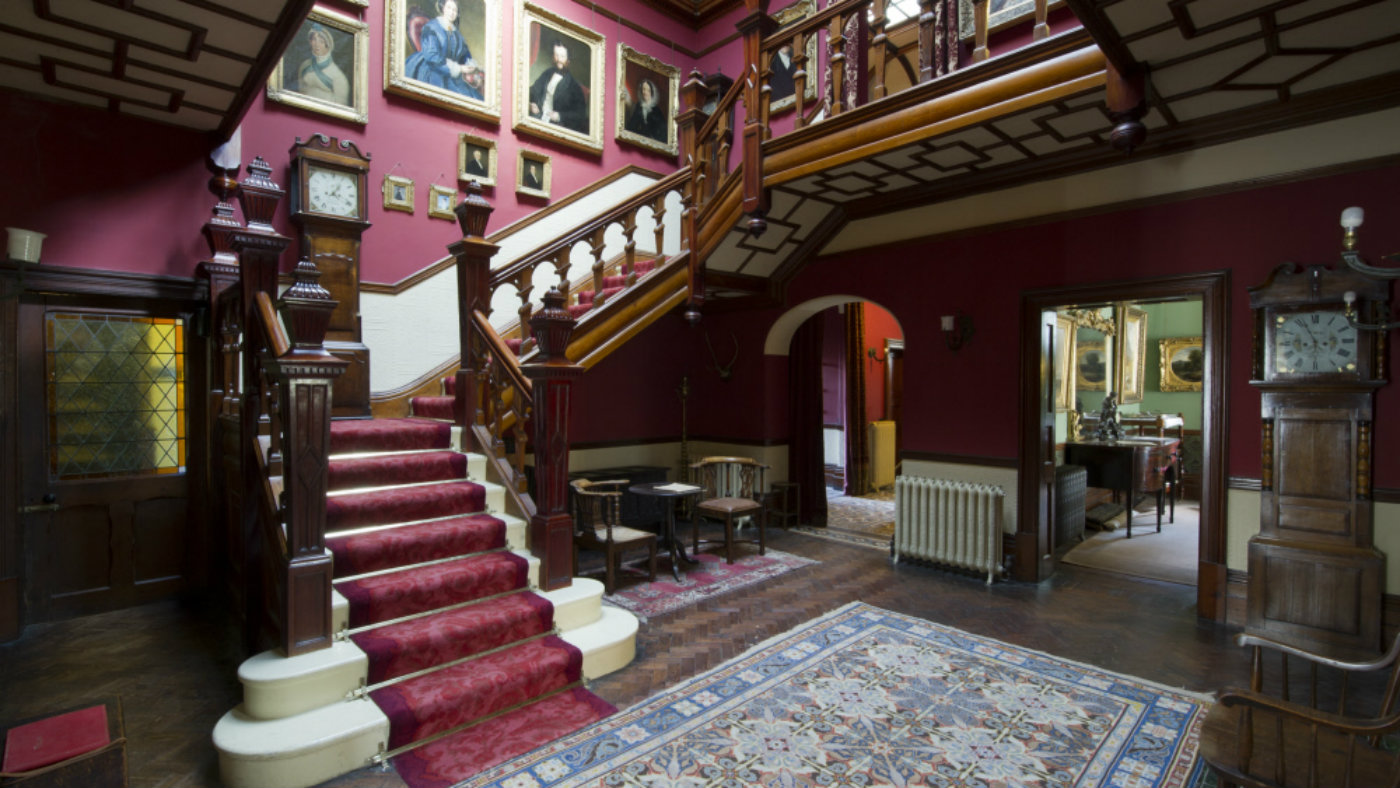
Most gentlemen’s villas from the Victorian and Edwardian periods have been demolished for housing estates or converted into care homes. Therefore, it’s a joy to see this rare gem open to the public.
There are no recreations here as most rooms have original wallpapers. This includes the 1920s floral wallpaper in the billiard room and William Morris ‘pomegranate’ wallpaper in the master bedroom.
Furthermore, the outbuildings give a real glimpse into days gone and include a cold store for meats, a granary, stables, pigsties and an old coach house.
Disappointingly, the house lacks consistency. Some rooms are well preserved from the early 20th century, but the kitchen area and the drawing room have succumbed to late 20th century alterations.
3. Linley Sambourne House, Kensington, London
Don’t miss – The stunning doors with painted detail and the dining room where Oscar Wilde once dined

The most cutting edge house on my top ten Victorian house interiors.
18 Stafford Terrace is a wonderfully eclectic middle-class home with amazingly preserved Aesthetic décor dating to the late Victorian and Edwardian period.
The drawing room beggars belief with its crowds of ornaments, pictures and furniture, capturing the Victorian love for clutter.
Likewise, the grand hallway with its fireplace, gloomy colours and stained-glass windows brings the Victorian period to life.
On my first visit I went on a guided tour with a servant re-enactor which I would highly recommend so you get a real feel for the house and its late Victorian owners.
Unfortunately, the kitchen areas in the basement no longer exist so it lacks that ‘downstairs’ experience.
2. Tenement House, Glasgow
Don’t miss – The original fixtures and fittings in the kitchen and bathroom

Tenement flats built in the late Victorian and Edwardian period line Glasgow’s streets. But this is probably the only apartment from this period with all its original fixtures and fittings.
The National Trust for Scotland recreated early wallpapers and decors in the early 1980s. Therefore, I feel the museum could benefit from a restoration using the latest conservation techniques as outlined by my house tour page.
This museum attraction boasts its original bathroom and kitchen and working gas lighting. Furthermore, the furniture and possessions belonged to the middle-class spinster who lived in the house from 1911 to 1965.
1. Mr Straw’s House, Worksop, Nottinghamshire
Look out for – Tutakhamun inspired stair carpet and the spartan 1920s bathroom
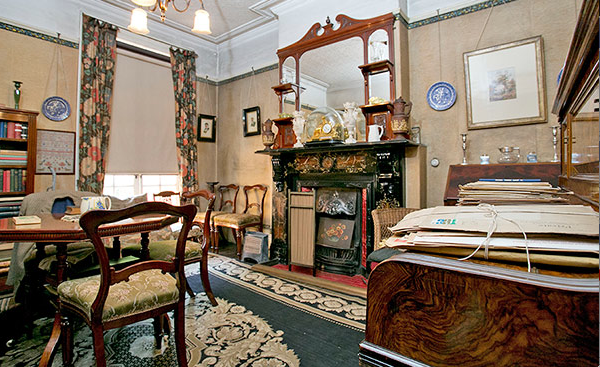
This Edwardian house is probably the most preserved early 20th middle-class home in the UK open to the public.
The majority of fixtures and fittings are original to the 1900s but the interior decor mainly dates from the early 1920s.
Therefore, walking into this house feels like you have stepped back in time as all the Straw family’s belongings remain.
Above all, no other house on the top ten Victorian house interiors offers this sense of originality and completeness. You really get a clear insight into how an ordinary middle-class family decorated and used their home during the first half of the 20th century.
Minor restorations include a patched area of hallway wallpaper reproduced by the original makers Sanderson. Therefore it remains pretty untouched unlike most of the other top ten Victorian house interiors.
The original Edwardian cast iron cooking range is the only missing original feature.
I used Siteground and I created it myself.